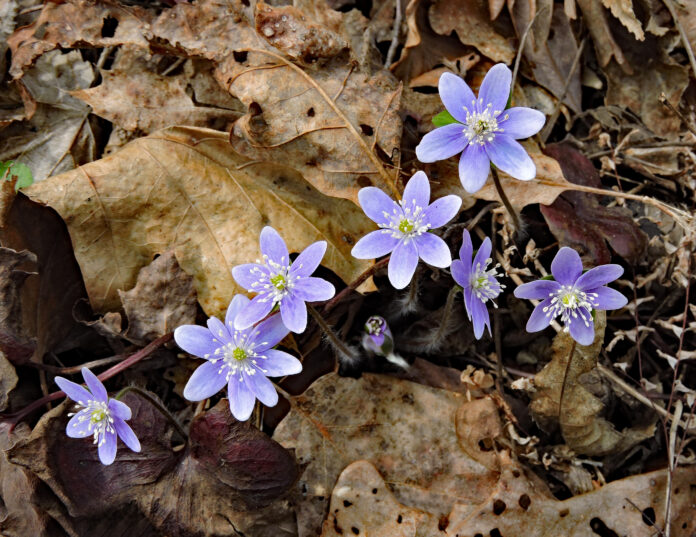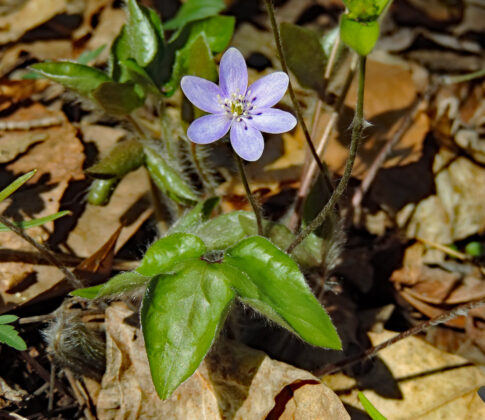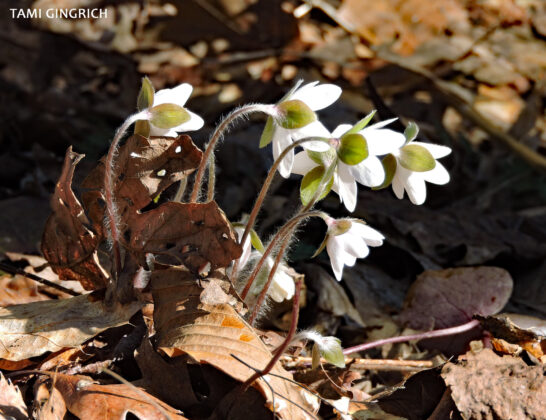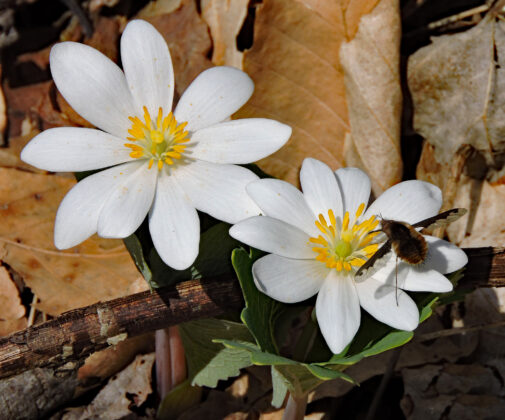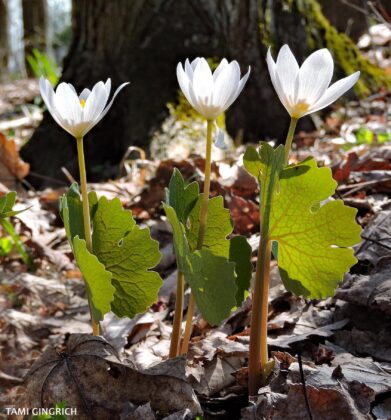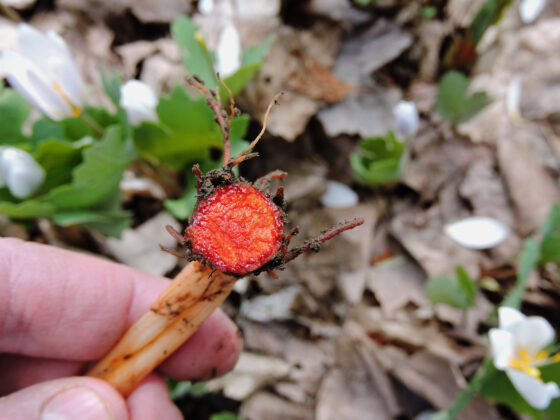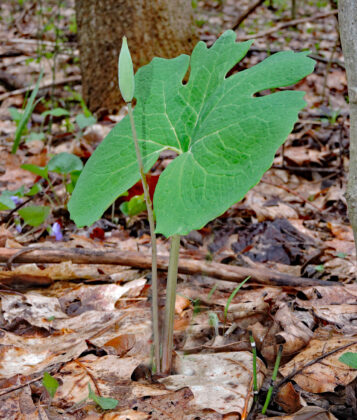Hands down, spring is my absolute favorite season. Whether it’s that telltale scent on the breeze, the increased bird activity, the sounds of amorous amphibians or the greening of the landscape, spring is an awakening. Forget the New Year’s resolutions, mine start at the onset of spring.
What better way to usher in the season each year than with a breathtaking display of wildflowers? Their appearance is so brief, I find myself in a tizzy just trying to get out and take in all the different species. For those of you attuned to the springtime emergence, you know that there is an annual order to when certain flowers make their appearance. Here in northeast Ohio, where nighttime temps continue to plummet below freezing and snow lingers on the landscape, wildflowers are just beginning to show themselves. It’s hard to believe that southern locations are well into their gaudy displays and, in some places, even past their prime. When I see online posts of these colorful spectacles, I feel as if I live in a completely different world.
Ephemerals
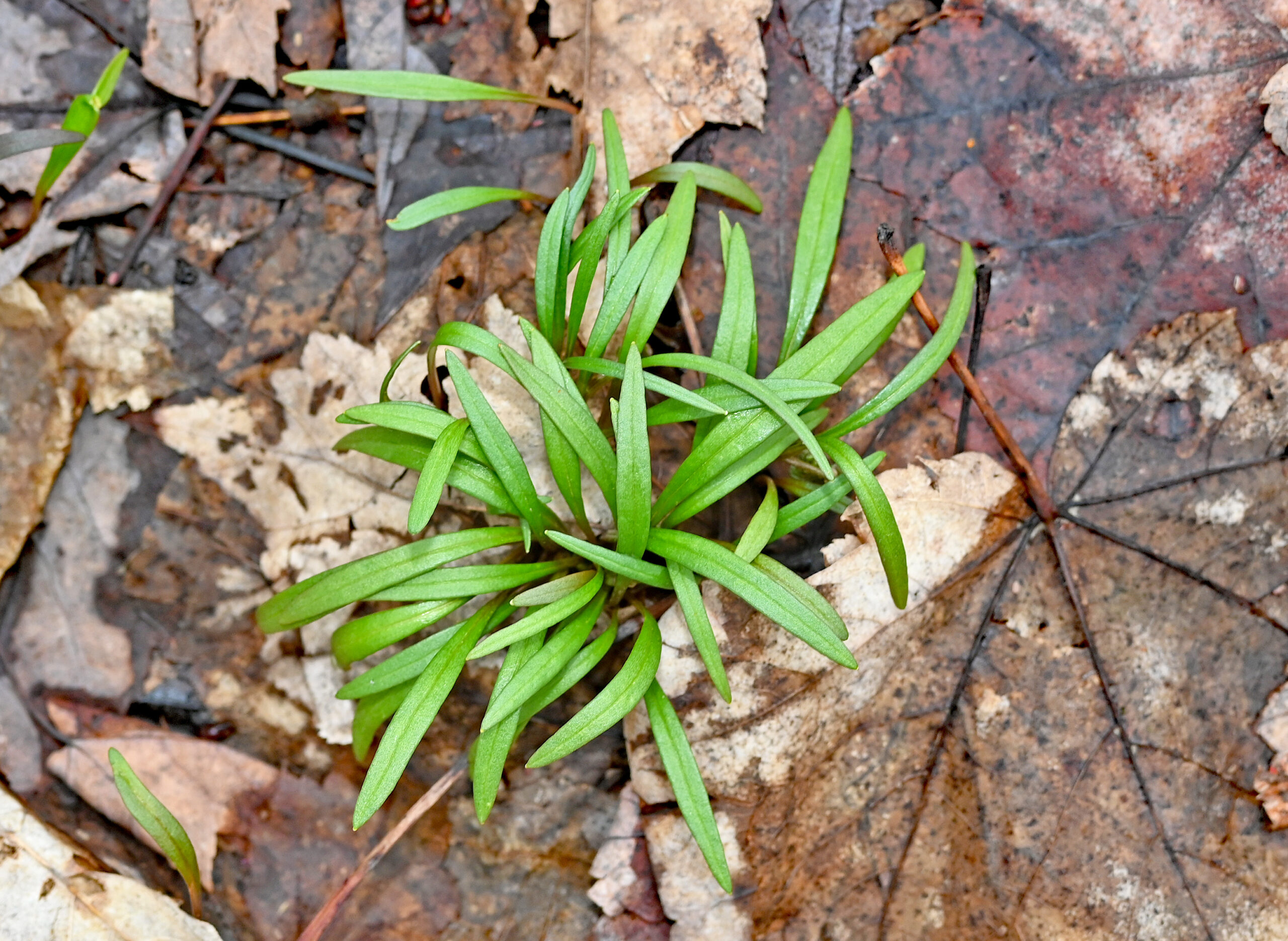
Spring wildflowers are considered ephemeral plants. As the sun filters down through the bare branches of the forest, it warms the ground, awakening the plants beneath the soil. In an effort to beat the impending leaf emergence and take advantage of this energy, spring wildflowers emerge quickly. They bloom, are pollinated by early insects, set seeds and die back in a very short period of time. In fact, as the forest canopy begins to green up and fill in overhead, nearly all evidence of the spring spectacle has disappeared, the underground structures such as bulbs, roots and rhizomes are all that remain until they are awakened again the following year. This extremely short period of above-ground growth is an amazing strategy, allowing the plants to flourish quickly under abbreviated favorable conditions.
It would be nearly impossible to describe all the wildflower species here in northeast Ohio in this brief column, so I will choose a few of my favorites to highlight, species currently in bloom, so that you might immediately step outside and see them for yourself on your own property or at a nearby park.
Virginia spring beauty
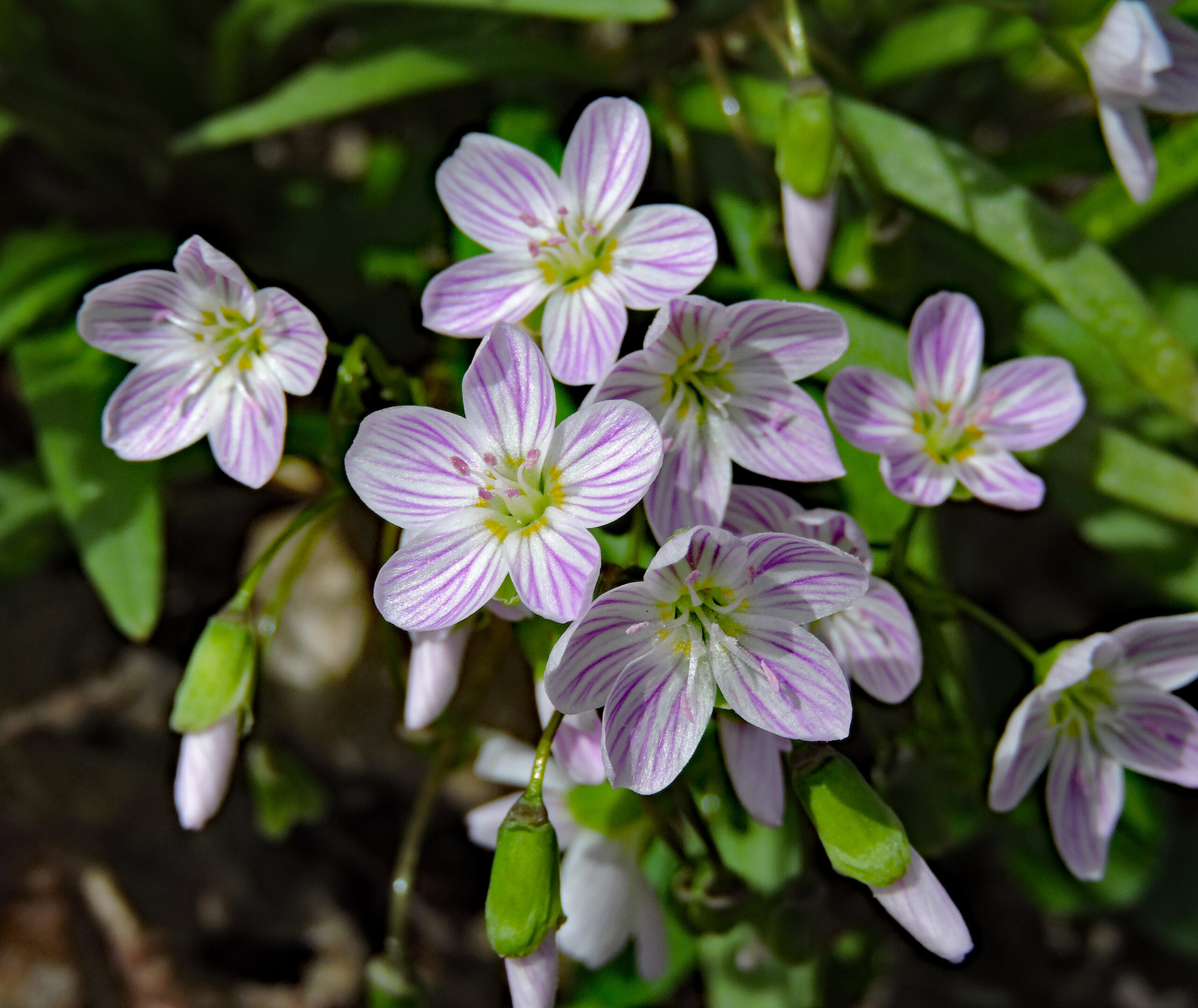
The Virginia spring beauty (Claytonia virginica) is one of the earliest flowers to take advantage of the warming soils. It is often noted for its abundance and ability to thrive in a variety of habitats. Although deciduous forests are its home base, it is often found thriving in other areas and has been known to blanket lawns in an incredible display.
Spring beauties should not be taken for granted. Be prepared to spend some time on your hands and knees so that you can really scrutinize the blossoms. Each flower sports five white petals, which appear pink due to the bold stripes adorning them. These lines serve to guide insects, much like a runway, into the flower’s center where copious amounts of nectar await. As the insects consume the tasty liquid, grains of pollen attach themselves to the invertebrates. These are then carried to other like flowers where they detach, allowing for pollination to occur.
The thin green leaves of the spring beauties break from the soil first, resembling a healthy tuft of grass before sending up a stem that supports several flowers. Spring beauty blossoms are fickle, opening only on the warmest, sunniest days and closing at night or whenever clouds roll in. Yet they are one of the most important spring ephemerals, as they provide food for early species of bees and flies who depend upon them for survival.
Hepatica
If there is one wildflower that tops the list as my absolute favorite, it is the hepatica (Hepatica noblis). This plant breaks ground early, displaying groups of three to eight flowering heads held upright on fuzzy stems from 3 to 6 inches tall. The delicate flowers come in a variety of pastel colors, including shades of pink, purple, blue and white, which stand out against the brown forest floor. Hepatica is also known as liverleaf or liverwort because their three-lobed leaves, which appear following the blossoms, resemble the shape of the human organ.
Hepaticas, members of the buttercup family, are found in woodland habitats, often on well-drained slopes. Every year, I make a pilgrimage to my favorite sites that host these gorgeous spring ephemerals. Safe from foraging deer on super-steep slopes, the plants flourish, forming larger clumps as they age, some displaying up to 30 flowers in a clump.
Bloodroot
Another spring ephemeral currently making its appearance is bloodroot (Sanguinaria canadensis). This plant is aptly named for its underground root or rhizome just below the surface of the soil, which produces and stores a bright red sap. It is this very characteristic that has made the plant popular throughout history, the native Americans utilizing it both for medicinal reasons as well as a natural dye used on the skin during rituals and for staining baskets and clothing.
Members of the poppy family, the single flowers shoot up and open wide upon sturdy stems. Maxing out around 2 inches, each blossom sports eight to 12 narrow white petals, surrounding bright yellow pollen-laden anthers. Shortly after emerging from the soil, a second stem emerges, supporting a deeply lobed leaf that initially wraps itself tightly around the stem of the blossom. Bloodroot blossoms last but a few days before the petals fall to the ground, creating a white spattering on the brown leaves below. If the flower was successfully pollinated, a long, green seed pod takes its place upon the stem, growing plumper by the day, finally splitting open to expel over 30 black shiny seeds. Each seed has a fleshy organ known as an elaisome, developed to attract ants. As the insects encounter the seeds, they carry them back to their underground nests. Once the elaisome has been consumed, the ants haul the seeds to a “trash dump” beneath the soil, where favorable conditions allow the seeds to germinate.
When we built our house in the woods 30 years ago, I began to transplant spring ephemerals along the path to our door. Whenever I saw a house or a development going in, I would make a point to rescue some of the doomed spring ephemerals growing on these sites. This labor of love has been incredibly rewarding, as I now have a front-row seat to many of these beautiful flowers and am able to witness their emergence daily.
Each spring, the Ohio Department of Natural Resources publishes weekly “Ohio Spring Wildflower Bloom Reports.” These allow the reader to discover what is blooming throughout the different regions of the state. Every Friday, a new report is issued, which will continue through mid-May. You can find it online at https://ohiodnr.gov/go-and-do/see-the-sights/wildflowers/wildflowers.






